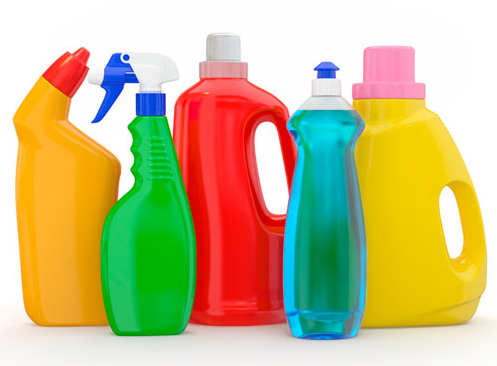Though people selling alternatives to science will use labels like "chemical-free", that is not really the case. Our world is entirely chemical.
'Chemical' has simply been turned into a bad word in 'if I cannot pronounce it, it must be bad' modern environmentalism catered toward wealthy elites. Are green alternatives actually less toxic? No, it turns out, and even worse is that because they claim a 'natural' basis, they are exempt from the labeling requirements of traditional products, so green consumers don't know the extent of the risk they are undertaking.
A new study in Air Quality, Atmosphere&Health found 156 different volatile organic compounds (VOCs) emitted from 37 products, with an average of 15 VOCs per product, from products such as air fresheners, cleaning products, laundry supplies, and personal care products, including those with certifications and claims of 'green' and 'organic'. Both fragranced and fragrance-free products were tested.
No difference in 'organic' and 'green' toxicity
Gas chromatography/mass spectrometry (GC/MS) headspace analysis was used to identify VOCs emitted from the 37 products, representing air fresheners and deodorizers (sprays, gels, solids, oils, and disks), laundry products (detergents, dryer sheets, and fabric softeners), cleaning supplies (all-purpose cleaners, window and surface cleaners, disinfectants, and dishwashing liquids), and personal care products (soaps, hand sanitizers, sunscreens, lotions, baby lotions, deodorants, shampoos, and baby shampoo).
Findings revealed that emissions of carcinogenic hazardous air pollutants from 'green' fragranced products were not significantly different from regular fragranced products. Of these 156 VOCs, 42 are classified as toxic or hazardous under US federal laws, and each product emitted at least one of these chemicals.
In total, over 550 volatile ingredients were emitted from these products, but fewer than 3% were disclosed on any product label or material safety data sheet (MSDS).

No label on that green product? It wouldn't matter, they aren't required to list all of their toxic chemicals anyway.
"The paradox is that most of our exposure to air pollutants occurs indoors and a primary source is consumer products. But the public lacks full and accurate information on the ingredients in these products," said Dr. Anne Steinemann, Professor of Civil Engineering from the University of Melbourne.
Consumer products sold around the world are not required to list all ingredients, or any ingredients in a chemical mixture called 'fragrance', but the most common chemicals in 'green' and less expensive fragranced products were terpenes, which readily react with ozone in the air to generate a range of additional pollutants, such as formaldehyde and ultrafine particles. Terpenes are not in fragrance-free versions
"Given the lack of information, consumers may choose products with claims such as green, natural, or organic, but those claims are largely untested," Steinemann said.


